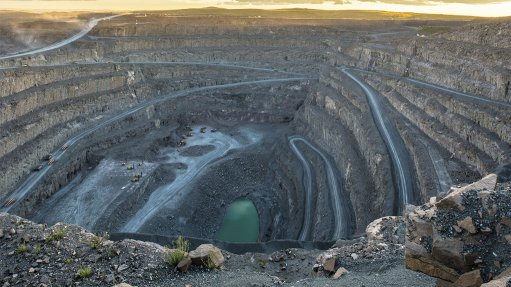Technological innovations will be key to success of seabed mining
Minerals from the deep sea, such as polymetallic nodules, ferromanganese crusts and hydrothermal sulphides, are potential sources of metals such as copper, nickel, cobalt, manganese and iron.
In future, depending on the development of suitable technologies, these minerals could be mined and metals extracted from them, says Council of Scientific and Industrial Research National Institute of Oceanography of India head scientist Dr Rahul Sharma.
He notes that, in many areas beyond traditional national jurisdictions, exploration licences have been acquired over large tracts of the seafloor in the Atlantic, Pacific and Indian oceans from the International Seabed Authority under the United Nations Law of the Sea.
Therefore, Sharma points out, research and development with regard to technology for mining and extraction and environmental studies are “well under way” in view of eventual deep-sea mining.
He remarks that, until 2010, only eight so-called contractors had been allotted areas in the international waters of the Pacific and Indian oceans to conduct exploration work. Subsequently, many more have laid claims in the Pacific Ocean for polymetallic nodules, as well as in the Indian and Atlantic oceans for hydrothermal sulphides.
Sharma says that, according to one estimate, mining of polymetallic nodules at a rate of 1.5-million tons a year could yield 0.358-million tons of metals a year, and the future value of total metals produced yearly is estimated at $936.5-million, with a total yield of about $18.73-billion in 20 years from a single mining site.
“It is expected that the areas likely to be affected by deep-sea mining will include the surface and water column, as well as the seafloor, where the minerals will be separated from the associated substrate, either by scooping or drilling.
“Inevitably, these activities will lead to the resuspension and redistribution of debris in the bottom waters along the path of the mining and in the vicinity of the mining tracts,” he highlights.
Sharma elaborates that disruption on land is also likely to take place as a result of metal extraction and tailings disposal. He says that several experiments have been conducted in these areas to assess these impacts and to predict the consequences of commercial mining, so that measures can be developed to minimise the anticipated impacts in future.
To gain self reliance, Sharma says, many contractors have initiated research programmes for the development of technology for mining, as well as for the processing of deep-sea minerals.
However, he stresses that there are several technological challenges associated with the mining of deep-sea mineral deposits under extreme operating conditions, such as extensive operating depths of between 3 km and 6 km, considerable distances from the shore of more than 1 000 km, high pressures of between 300 bar and 500 bar, low temperatures between 0 ºC and –100 ºC and physical forces, such as currents, waves and winds.
Comments
Press Office
Announcements
What's On
Subscribe to improve your user experience...
Option 1 (equivalent of R125 a month):
Receive a weekly copy of Creamer Media's Engineering News & Mining Weekly magazine
(print copy for those in South Africa and e-magazine for those outside of South Africa)
Receive daily email newsletters
Access to full search results
Access archive of magazine back copies
Access to Projects in Progress
Access to ONE Research Report of your choice in PDF format
Option 2 (equivalent of R375 a month):
All benefits from Option 1
PLUS
Access to Creamer Media's Research Channel Africa for ALL Research Reports, in PDF format, on various industrial and mining sectors
including Electricity; Water; Energy Transition; Hydrogen; Roads, Rail and Ports; Coal; Gold; Platinum; Battery Metals; etc.
Already a subscriber?
Forgotten your password?
Receive weekly copy of Creamer Media's Engineering News & Mining Weekly magazine (print copy for those in South Africa and e-magazine for those outside of South Africa)
➕
Recieve daily email newsletters
➕
Access to full search results
➕
Access archive of magazine back copies
➕
Access to Projects in Progress
➕
Access to ONE Research Report of your choice in PDF format
RESEARCH CHANNEL AFRICA
R4500 (equivalent of R375 a month)
SUBSCRIBEAll benefits from Option 1
➕
Access to Creamer Media's Research Channel Africa for ALL Research Reports on various industrial and mining sectors, in PDF format, including on:
Electricity
➕
Water
➕
Energy Transition
➕
Hydrogen
➕
Roads, Rail and Ports
➕
Coal
➕
Gold
➕
Platinum
➕
Battery Metals
➕
etc.
Receive all benefits from Option 1 or Option 2 delivered to numerous people at your company
➕
Multiple User names and Passwords for simultaneous log-ins
➕
Intranet integration access to all in your organisation

















